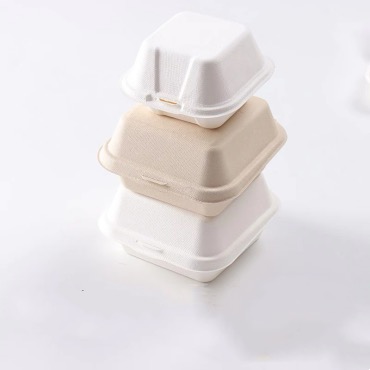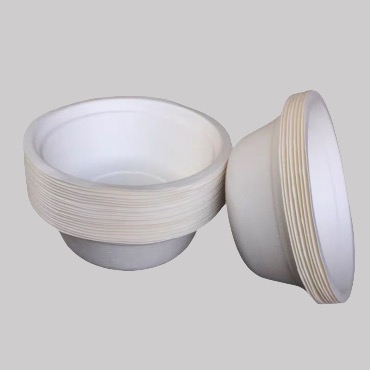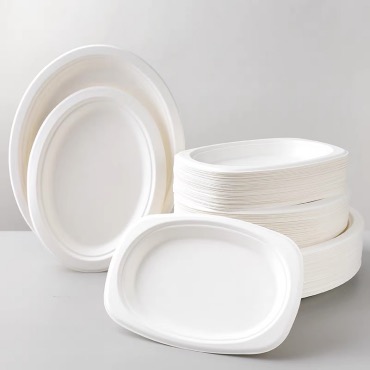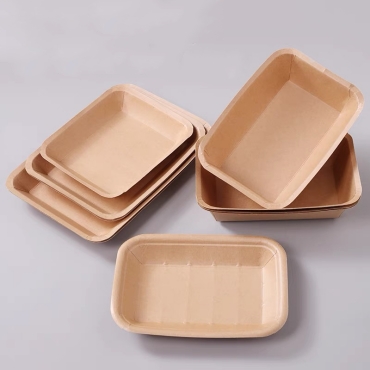On one hand, plastic pollution is becoming an ever-growing environmental crisis. On the other, our fast-paced lifestyles have made takeout meals and convenience packaging part of daily life. It feels like we’re stuck in a dilemma.
Thankfully, biodegradable food containers are emerging as a practical, eco-conscious solution. But are they truly better than plastic Do they really degrade in real-world conditions And how do you choose the right ones for your business
This guide breaks it all down—helping you make smart, sustainable choices that benefit both your brand and the planet.
Why Biodegradable Food Containers Matter
Conventional plastic takeaway containers may be cheap and durable, but they come at a high cost as they can take hundreds of years to break down and often end up polluting oceans and harming wildlife.
Biodegradable containers, by contrast, are made from plant-based or naturally derived materials that microorganisms can break down into water, carbon dioxide, and organic matter under the right conditions. These containers are designed to reduce long-term environmental impact and help close the loop on packaging waste.
Learn more at hemcbags.com
Common Mistakes When Choosing Biodegradable Containers
Not all products marketed as biodegradable are truly sustainable. Here are key pitfalls to avoid
1. Believing Every Green Claim
Some products labeled biodegradable still contain petroleum-based plastics like PE, PP, or PET. True biodegradable containers are typically made from natural polymers such as
- PLA Polylactic Acid
- PBAT Polybutylene adipate terephthalate
- Starch or cellulose-based blends
Tip Always check for certification marks like
- EN 13432 Europe
- ASTM D6400 USA
- TÜV Austria or BPI Certified
These ensure the container has passed compostability tests.
2. Overlooking Composting Conditions
Biodegradable containers often require specific industrial conditions such as high temperatures and humidity to fully decompose. If disposed of in landfills or home compost, some may remain intact for years.
Look for packaging labeled as
- Home compostable breaks down in backyard compost
- Industrially compostable requires commercial composting facilities
3. Ignoring Performance
Biodegradable doesn’t always mean high-performing. Some eco-friendly materials can warp, leak, or fail to hold up under heat or moisture.
Before buying, test for
- Leak resistance
- Heat tolerance for hot foods or microwaving
- Cold or freeze resistance for refrigerated meals
4. Focusing Only on Price
While biodegradable containers can be slightly more expensive, the long-term benefits such as improving brand image and meeting sustainability regulations often outweigh the costs.

Comparing Biodegradable Materials Pros and Cons
1. Polylactic Acid PLA
Source Corn starch or sugarcane
Best for Cold foods, salads, cups, lids
Pros
- Transparent and rigid like plastic
- Compostable in industrial conditions EN 13432, ASTM D6400
- Microwave-safe check limits
Cons - Low heat resistance softens above 110°F or 45°C
- Not suitable for home composting
2. Polypropylene Carbonate PPC
Source Made from CO2 and propylene oxide
Best for Soft, flexible containers or blend with rigid materials
Pros
- Carbon-reducing manufacturing process
- Biodegrades into harmless substances
- Safe for aerobic decomposition
Cons - Limited heat resistance softens at 30–40°C
- Higher cost, limited availability
3. Kraft Paper with Coatings
Source Wood pulp chemical kraft process
Best for Paper bowls, trays, sandwich boxes
Pros
- Natural, compostable, and recyclable
- Can be microwaved and frozen
- Printable for branding
Cons - Needs biodegradable coatings to prevent leaks such as PLA, PPC
- Less durable for oily or heavy meals

Best Practice Recommendations
- Chilled items or cold takeaway Choose PLA containers or coated kraft paper
- Hot or greasy meals Use thicker kraft paper with heat-resistant coatings
- Want full compostability Seek certified containers with EN 13432 or ASTM D6400 labels
- Still unsure Ask your supplier for degradation test reports and composting compatibility
How to Find a Reliable Biodegradable Container Supplier
In today’s greenwashed market, it’s easy to fall for misleading claims. For restaurant owners, wholesalers, and food brands, partnering with a trusted supplier is key.
Example hemcbags A Trusted Source in China
hemcbags has over 20 years of experience in developing biodegradable materials, certified compostable products, and the equipment to manufacture them. As a high-tech enterprise, they offer
- Full RD control In-house development of PLA, PBAT, PPC, and more
- Global certification readiness Adapting to evolving rules in the EU, US, and Asia
- Custom solutions From raw materials to finished containers and packaging machines
Their products are designed to
- Withstand everyday use including heat, cold, liquids
- Degrade safely and completely under certified conditions
- Meet sustainability goals and enhance your brand image
Visit hemcbags.com to explore biodegradable packaging solutions for your business

Final Thoughts Choose Smart Act Green
Choosing biodegradable food containers isn’t just about replacing plastic—it’s about making informed decisions that align with your brand values and environmental goals.
Know your materials
Understand composting conditions
Look for trustworthy certifications
Partner with proven suppliers
Together, we can reduce our reliance on plastic and move toward a cleaner, greener future—one container at a time.
Need help sourcing compostable food packaging
Visit hemcbags.com for certified biodegradable container options

